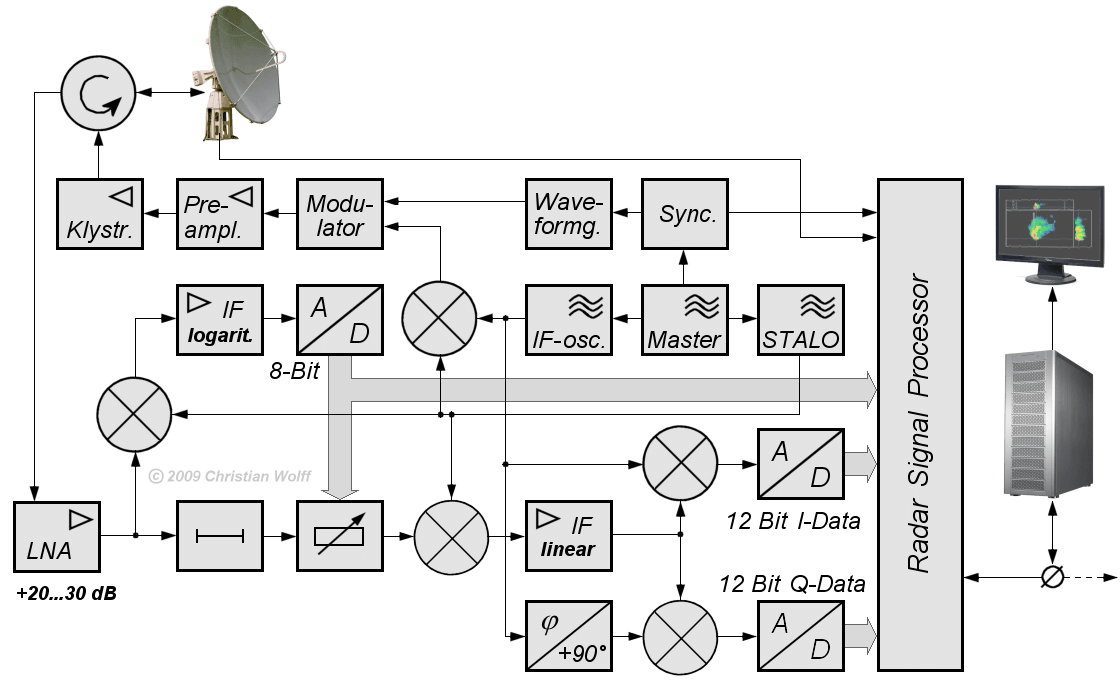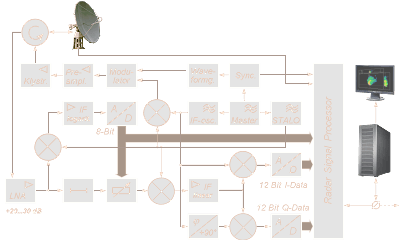Linear Receiver in Weather Radars
Linear Receiver in Weather Radars
Special Features for a linear receiver with high dynamic range
For weather radar, the echo signal is measured, not just detected. This principle finds expression in the block diagram of a receiver in a weather radar.
This one receiver must be protected against severe interference of fixed targets, it requires a very high dynamic range, an extreme sensitivity, and above all, a very good accuracy. Changes in the linearity of the gain must be known to the radar signal processor in order to restore during the required dynamic range compression in the receiver, the amplitude of the original echo signal again. Therefore simple STC circuits and logarithmic IF amplifiers with demodulation, such as those used in air surveillance radar systems, are not suitable.
Such a logarithmic amplifier is used, however, with a subsequent analog to digital converter (ADC) to generate a control signal for a regulated attenuator. This digital signal is wired also to the radar signal processor so that the current state of the attenuator can be taken in account for the calculation of the amplitude.
This ADC must be extremely fast, so that the attenuation may act on the current echo signal. Flash ADC circuits that have a delay by one nanosecond are used in this receiver. Nevertheless, the signal in the linear receiver part must be delayed by this time, to avoid switching transients. This range of delay times can be achieved by detour-lines made of coaxial cable with a length of several meters.

Figure 1: Functional block diagram of a front-end linear receiver for weather radar
The block diagram shown here is a fully coherent radar. All frequencies and clock pulses are derived from the highly stable frequency of a master oscillator and these signals therefore have a phase reference stable to each other. By multiple frequency multiplication and mixing of the intermediate results, the frequency of STALO is generated. It is located above the transmission frequency with a separation of the used intermediate frequencies (IF).
The intermediate frequency is derived from the frequency of the master oscillator too. Often, this generator is still called COHO, because it ensures the phase reference (coherence) in the receive path. From the STALO and the COHO frequency the transmitter's frequency is downconverted. In the modulator, the transmitted pulse is generated as a short section of this continuous-wave frequency with even less power. This pulse is amplified and emitted with large power from the antenna. The transmitter output stage is a multi-cavity klystron often, which enables a high pulse power during a short pulse duration.

